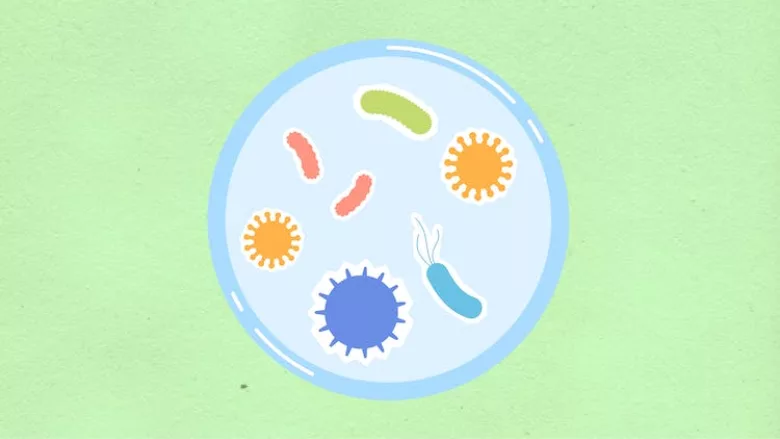Varied Interactions Between Biofilms and Enteric Viruses on Food Contact Surfaces

Credit: Monstera via Pexels
A recent study is one of the first to demonstrate that the presence of biofilms formed on food contact surfaces with various bacterial strains commonly found in the agrifood chain could promote the attachment of infectious foodborne enteric viruses under certain conditions. Researchers observed the interactions between rotavirus, hepatitis A, and norovirus with biofilms comprising spoilage bacteria and lactic acid bacteria (LAB).
Researchers inoculated four bacterial strains—Lactobacillus plantarum, Leuconostoc pseudomesenteroides, Pseudomonas fluorescens, and Lactobacillus rhamnosus—in monoculture and multispecies combinations on glass, stainless steel, and polystyrene (plastic) surfaces. Biofilm formation was then conducted in a meat slurry media to mimic the composition of organic material found in the meat industry. The biofilms were left in static condition for three days at 30 degrees Celsius, with the same concentration for each bacterial strain. The researchers then introduced rotavirus, hepatitis A, and murine norovirus (used as a substitute for human norovirus) to surfaces on which biofilms had formed, as well as on biofilm-free surfaces to observe viral attachment on its own.
The researchers observed that plastic surfaces promote more complete biofilm coverage compared to glass and stainless steel, possibly due to the material’s hydrophobic nature. Of the four tested bacteria, P. fluorescens showed the highest density of viable cell populations for the three surfaces, and L. pseudomesenteroides displayed the lowest density.
The study confirmed that rotavirus, hepatitis A, and norovirus can adhere to glass, stainless steel, and plastic surfaces in the absence of biofilms. Additionally, the data demonstrated that only 15 minutes of contact time can be sufficient to allow viruses to interact with and adhere to food contact surfaces. While hepatitis A and norovirus were found to have stable attachment to surfaces, infectious rotavirus particles tended to detach from surfaces over time and were found surviving in the meat slurry.
When observing the interaction between rotavirus and biofilms, the researchers found a significant increase of infectious particle adhesion in the presence of formed biofilms after a 24 hour incubation period on the stainless steel and plastic surfaces. After the same length of incubation time in the absence of biofilm, only a very small amount of rotavirus infectious particles could be recovered from the surfaces. Biofilms formed on plastic by P. fluorescens and L. pseudomesenteroid promoted a significantly heightened attachment rate for rotavirus, while L. rhamnosus biofilms showed the least increase in adhesion. The results also showed multispecies biofilms to significantly promote adhesion.
Regarding hepatitis A, when surfaces were coated with formed biofilms, viral adhesion increased significantly, particularly on glass and plastic coated with LAB—especially with L. plantarum and L. rhamnosus, and to a lesser extent, with L. pseudomesenteroides. Additionally, increases in adhesion were observed after 15 minutes of incubation and were maintained over time, which differs from rotavirus, where significant increases were observed mainly after 24 hours.
Finally, the presence of biofilms formed by mono and multispecies culture on the different food contact surfaces did not generally promote or reduce the presence of murine norovirus, as the numbers of infectious particles recovered were similar to those found on the surfaces lacking biofilm. The only significant increases in adhesion were found on plastic surfaces colonized by the two Lactobacillus biofilms after 90 minutes and 24 hours. The researchers note that, interestingly, after 24 hours in the presence of biofilms formed by P. fluorescens on the three tested surfaces, no infectious viral particles of murine norovirus were detected by plaque assay. The researchers hypothesize that the virus had been inactivated, or that essential receptors for infection of murine norovirus had been blocked by components present in the P. fluorescens biofilm, but the mechanism behind the observation is unknown.
Overall, the study demonstrates that hepatitis A, rotavirus, and murine norovirus do not have the same behavior nor the same binding abilities under identical experimental conditions. Since interactions with biofilms could protect foodborne viruses from desiccation, make them less sensitive to washing and disinfection, and prolong their survival in the environment, the researchers call for further exploration of the mechanisms involved in the interactions to better understand the role that biofilms may play as a reservoir of foodborne viruses, in the dispersion and possible contamination of food products, and in the persistence of viruses in the food sector environment.
Looking for quick answers on food safety topics?
Try Ask FSM, our new smart AI search tool.
Ask FSM →









